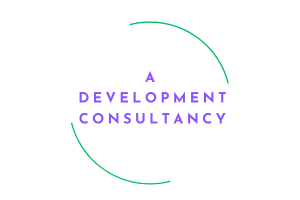BOOK REVIEW: Neurodiversity at Work by Theo Smith and Amanda Kirby
Book title: Neurodiversity at Work
Author: Theo Smith and Amanda Kirby
Rating: ***** Category: Well-rounded read
What’s it about?
Neurodiversity at Work covers the importance of embracing neurodiversity in the workplace. The authors, both experts in their fields, provide a comprehensive guide on how organisations can use the unique strengths of neurodiverse individuals to drive innovation, performance and productivity. This book is essential reading for HR professionals, managers and anyone interested in creating a more inclusive and effective workplace.
The detail
The book explores the concept of neurodiversity – the natural variations in the human brain that lead to differences in how people think, learn and interact with the world. Neurodiversity includes conditions such as autism, ADHD, dyslexia and other neurological differences. Smith and Kirby believe that these differences should be recognised and valued in the workplace, rather than seen as disadvantages.
The authors provide a detailed overview of the benefits of a neurodiverse workforce, including increased creativity, problem-solving abilities, and innovation. They also discuss the challenges that neurodiverse individuals face in traditional work environments and offer practical solutions for overcoming these barriers.
The book begins by defining neurodiversity and explaining its significance in the modern workplace. It highlights the prevalence of neurodiverse conditions, noting that approximately 20% of the population is neurodiverse.
The book is structured around several key themes:
- Understanding Neurodiversity: The authors provide a thorough explanation of various neurodiverse conditions, debunking common myths and misconceptions. They emphasise that neurodiversity is not a medical issue to be ‘fixed’ but a natural variation that can offer unique strengths.
- The Business Case for Neurodiversity: Smith and Kirby present compelling evidence that neurodiverse teams can outperform neurotypical teams in certain tasks. They cite examples from leading companies like Microsoft and IBM, which have successfully integrated neurodiverse employees and reaped significant benefits.
- Recruitment and Hiring: The authors offer practical advice on how to attract and recruit neurodiverse talent. They suggest modifications to job descriptions, interview processes and assessment methods to ensure that neurodiverse candidates are given a fair chance.
- Creating an Inclusive Workplace: Smith and Kirby provide strategies for creating a supportive work environment for neurodiverse employees. This includes making reasonable adjustments to workspaces, providing clear and structured communication, and offering training for managers and colleagues.
- Case Studies and Interviews: The book is enriched with real-life case studies and interviews with neurodiverse individuals and their employers. These stories provide valuable insights into the experiences of neurodiverse employees and the positive impact they can have on organisations.
Summary
Neurodiversity at Work is a powerful and insightful book that challenges traditional views of the workplace and advocates for a more inclusive approach. Theo Smith and Amanda Kirby make a compelling case for the benefits of neurodiversity, backed by research, case studies and practical advice. By embracing neurodiversity, organisations can unlock the full potential of their workforce, drive innovation and create a more dynamic and productive work environment.
Who would benefit from reading this book?
This book is a must-read for anyone looking to understand the value of neurodiversity and how to create a workplace that supports and celebrates cognitive differences. It is not just a guide for HR professionals but a call to action for all organisations to recognise and capitalise on the strengths of neurodiverse individuals.
What we liked about the book
The book balances practical advice with research and case studies, providing a comprehensive understanding without being overly academic or requiring significant perseverance.
What we didn’t like
Although the book provides practical advice, it could have gone deeper into specific strategies and examples, particularly for smaller organisations that may not have the resources of larger companies like Microsoft and IBM.
More about the authors
Theo Smith
Theo Smith is a prominent advocate for neurodiversity and an expert in recruitment and employment. He has over 15 years of experience in the recruitment sector, working in various roles including global executive search, recruitment process outsourcing (RPO) and in-house recruitment. Theo is also known for his dynamic and engaging presentations on neurodiversity, having spoken at numerous events and organisations.
He co-authored Neurodiversity at Work and has been recognised for his contributions to diversity and inclusion, winning the Business Book Awards for best book in DE&I. Theo’s personal experiences with neurodiversity, including being dyslexic, ADHD and autistic, as well as being a parent to neurodivergent children, deeply inform his work.
Amanda Kirby
Professor Amanda Kirby is a leading figure in the field of neurodiversity, with an extensive background in medicine, academia, and research. She is an emeritus professor at the University of South Wales and an honorary professor at Cardiff University. Amanda has written nine books and over 100 research papers on neurodiversity.
She is the CEO of Do-IT Solutions, a company that provides web-based screening and assessment tools for neurodiversity. Amanda also chairs the ADHD Foundation in the UK and works closely with several autism charities. Her work is driven by both her professional expertise and personal experiences, as she is neurodivergent herself and has neurodivergent children and grandchildren.
Other books by Theo Smith and Amanda Kirby
Theo Smith is primarily known for his work on Neurodiversity at Work. He has also contributed to various articles and podcasts focused on neurodiversity and inclusive recruitment practices. His podcast, “Neurodiversity – Eliminating Kryptonite and Enabling Superheroes,” is another platform where he shares insights and interviews with experts in the field.
Amanda Kirby has authored several books and numerous research papers on neurodiversity and related topics. Some of her notable works include:
- Dyspraxia: The Hidden Handicap – This book provides an in-depth look at dyspraxia, offering practical advice for individuals and families dealing with this condition.
- 100 Ideas for Supporting Pupils with Dyspraxia and DCD – Co-authored with Lynne Peters, this book offers practical strategies for teachers and educators to support students with dyspraxia and developmental coordination disorder (DCD).
- Living with Dyspraxia: A Guide for Adults with Developmental Dyspraxia – This guide, which includes contributions from Mary Colley and Victoria Biggs, is aimed at adults living with dyspraxia, providing insights and coping strategies.
- How to Succeed with Specific Learning Difficulties at College and University – This book offers guidance for students with specific learning difficulties to help them succeed in higher education.
- The Adolescent with Developmental Coordination Disorder (DCD) – This book focuses on the challenges faced by adolescents with DCD and provides strategies for support.
- How to Succeed in Employment with Specific Learning Difficulties – This guide is designed to help both employees and employers understand and support individuals with specific learning difficulties in the workplace
At People Business we’re encouraged to research and read to keep up to date and to delve deeper into areas that our professional lives take us. If you’re interested in speaking to one of our experienced and informed consultants, do get in touch.
Get in touch




